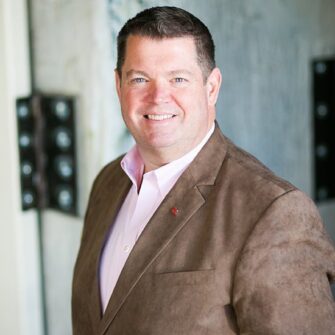How to Get Rich Quick in These 6 Fantasy Worlds

Everyone and their accountant is writing articles about how you can get rich in the real world. But what if you were magically transported to a fantasy setting? Maybe you opened a dusty book hidden in the library attic or your house got zapped with lightning while you were playing your favorite video game.
Either way, all the stuff you learned about interest and low-yield savings bonds is worthless now! Unless ... it isn’t? Thankfully, we go to where other financial advice blogs are too afraid to go. To infinity, and beyond! (Except, uh, we aren’t covering Toy Story world.)
Westeros - Game of Thrones
Westeros may not have paper money, but they do have coins with cooler names than “quarters” or “pennies.” When you open up your wallet in Westeros, you’ll find Gold Dragons, Silver Stags and … um ... Copper Pennies. Well, ALMOST every coin has a cooler name.
We’re not sure when in Westeros’s history you’ve been transported to, so we’ll be sure not to spoil anything about a future that might not have happened yet. In general, however, power and money in Westeros are contained within the Great Families.
Here’s how Lawrence Cicchetti, game design student at the University of Advancing Technology, explained it: “In Westeros, there are two houses considered to be the wealthiest: Lannister and Tyrell. Lannister is known for its large coffers full of gold and its immense lands. They are so famous that people think their house motto is, ‘A Lannister always pays his debts.’ House Tyrell has become rich, however, due to their large, fertile reach of land. They have the largest food stores in all of Westeros, which is one the most important resources when winter lasts seven years. Money is nice but worthless when there's nothing to buy with it. House Tyrell can raise and maintain an army based on the food they have.”
That farmland is all the more vital because of the feudal nature of Westeros’s economy. “Westeros is a land that runs heavily on feudalism," Cicchetti told us. “This is a system in which those at the top have the power, and the people below them work for those above for protection.
Feudalism is based on four key features:
- The king controls the army
- The lords look over the land
- Knights protect the land
- Serfs produce the food for the land
“Food is the main form of currency in this system. While coins are traded, only the privileged will ever deal in coinage on a regular basis. The coins are as you would expect in a medieval setting, made of gold, silver, and copper. These values are usually measured in how much they can be used to buy. One gold coin could feed a peasant for a year.”
Essos, the continent to the east of Westeros, has less centralized control. It’s composed of various “free cities” which, ironically, have a large slavery component to their economy. Braavos, the most powerful and wealthiest of the free cities, is home to the Iron Bank, which lends money to rulers. If it doesn’t get it back, it’ll fund the enemies of those rulers to overthrow the debtor and collect what the bank is owed.
Your best bet for making it rich in Westeros is to have been born into a powerful and wealthy family. Failing that, maybe you could marry into a powerful and wealthy family. If that still proves too difficult, consider getting yourself some dragons and a loan from the Iron Bank so you can conquer a powerful and wealthy family.
A Galaxy Far, Far Away - Star Wars
The Star Wars films, games, books, action figures, and measuring cups have made more money than was previously thought to exist on Earth. Or, if you want to be slightly less hyperbolic, you could just say the entire Star Wars franchise is worth $42 billion.
So, yes, Star Wars is a financial empire unto itself but what about money in the Star Wars universe? Is there a common galactic currency? Are Jedis salaried? Why is Jabba so rich?
We reached out to some of our favorite Star Wars scholars for some financial insight…
Writer and podcaster Mark Millien gave us a great introduction (imagine this text scrolling up into the blackness of space): “Forty years ago when the galaxy far, far away dropped out of hyperspace and into our collective consciousness it was rife with smugglers, trade consortiums, a thriving black market, and a commodities exchange that included slavery.”
But let’s say you want to buy some droids. What currency will you be shelling out?
“Credits, the common currency of the Star Wars universe, are an electronic fiat currency backed by a central galactic bank,” Millien told us. “Funds can be accessed via a credit chip or cred stick that houses secure memory algorithms that track accounts across billions of worlds with complete accuracy. Though they can be hacked and tampered with, they can always be traced, thus thieves and the broader criminal element tend to prefer hard currencies made up of precious metals in the form of bars or ingots or trade goods. Investments in stocks, bonds and other notes of credit or securities were readily available to those who could afford them.”
So who signs the back of a Jedi's paycheck?
Jason Hamilton, co-owner of pop up toy, comic, and collectibles site Pop Roc knows: “Jedi themselves didn't really have personal finances. The Order itself received some money from the Senate and would usually receive some payment when doing a job such as mediating a dispute. Moreover, there were often donations from rich and poor alike. These funds were all used for things like resources, improvements to the temple, mission expenses, etc. Jedi were minimalist. They each had their own lightsaber and tools, some clothes, and around the time of the Clone Wars they usually each had their own starfighter for mission purposes, but that was about it. Everything else was shared among The Order.”
As far as how you should get rich in the Star Wars world… the Death Star was really expensive, so maybe try joining the Dark Side and working your way up? Probably not getting rich as a Jedi.
The Federation - Star Trek
What about that other famous space series with “star” in the title? That’s right, we’re talking Trek.
According to Millien, “Star Trek boasted an egalitarian socialist economy where money was no longer necessary within the Federation, though served a purpose in wilder space.”
Dave Arland, President of Arland Communications, had this to say: “The use of money in Star Trek changed through the series. The original series had several references to ‘Federation credits,’ most obviously in the episode ‘The Trouble with Tribbles’ where a shopkeeper was selling unusual items—including the ubiquitous tribbles.
“Later incarnations also showed money being used, such as the notorious Ferengi (a race entirely devoted to profit) on board the ‘Deep Space Nine’ space station.”
It might be tough to get rich in an egalitarian society, but maybe try selling tribbles?
The Wizarding World - Harry Potter
How do the wizards of the Harry Potter universe manage their funds? We were able to ask our resident Harry Potter expert, Caroline Thompson that very question, and she was able to give us a comprehensive breakdown:
“The witches and wizards living behind the Statute of Secrecy in the Harry Potter universe have a complicated relationship with money. You might assume that magic alone would be enough to run the fictional British economy, but wizards have a currency all their own, which makes little sense from an outside perspective.
“Although the books take place in the 1990s, the wizarding community had not, at that point at least, seemed to have adopted the Muggle notion of credit. Instead, all their transactions take place in cold, hard cash, using oversized coins called galleons, knuts, and sickles. Early on in Harry Potter and the Sorcerer's Stone, gentle half-giant Rubeus Hagrid gives Harry the rundown on wizarding coin. In short:
1 galleon = 17 sickles
1 sickle = 29 knuts
“While Rowling has stated that a galleon is ‘about five Great British pounds,’ that conversion doesn't actually make much sense when you look at the text. In 2016, a Redditor calling themselves aubieismyhomie made a detailed analysis of every purchase made in the entire series, and concluded that Rowling's conversion was way under the mark. Instead, they posited that:
1 galleon = ~$25
1 sickle = ~$1.50
1 knut = ~$0.05
“Wizard money is controlled by goblins, kept in vaults deep in the tunnels of Gringotts Bank since 1474. While much is made of the fact that Gringotts is nearly impossible to break into, this does not, in fact, seem to be the case. In the seventh book, Harry, Hermione, and Ron manage to break in without much more than some Polyjuice Potion and the Imperius Curse, which any wizard or witch worth their salt can muster.
“If you want to get rich in the Harry Potter universe, you could either try and marry your way into a prominent family (the Malfoys are LOADED, y'all!), get Harry Potter to lend you a cool $25,000 after he wins the Triwizard Tournament and use that to start a successful joke shop—or just rob Gringotts, cuz apparently that's so easy a few sleep-deprived teenagers could do it on a whim.”
Galactic Padishah Empire - Dune
Frank Herbert’s classic series of Dune novels take place in a distant future that actually hearkens back to both the distant past and to the political present in which Herbert wrote them.
Sure, there are spaceships and giant sand worms and powerful psychics and all that, but all of those futuristic tropes are in the service of a feudal system that relies almost entirely on one specific natural resource to sustain itself.
This is one of the reasons that Herbert’s books feel so vibrant. For as much as they are about fantasy and derring-do, they are grounded in a very real sense of political and economic reality. Even once mankind masters intergalactic space travel, we’re still going to be fighting wars over the control of natural resources.
(For this section, we’re going to be focusing on the first novel in the series, Dune.)
When Herbert’s novel begins, the entire universe exists under the thumb of the Padishah Emperor Shaddam IV. Underneath the emperor, a series of royal families known as the Great Houses control sections of the Imperium on his behalf. Together, the houses form the Landsraad, a political body that serves as a counterweight to the emperor’s power.
The universe’s third great power is the Spacing Guild, which controls all interstellar travel and trade. The Guild’s Navigators are the only people capable of achieving faster than light travel, which they can only do while high on the spice known as melange that is harvested from the desert planet Arrakis.
Got all that?
Well, we’re not done. There’s also the CHOAM corporation which basically controls the universal economy. The emperor and the Great Houses of the Landsraad, in turn, control the corporation’s board of directors. They all own shares of CHOAM and take in enormous profits because of it. Herbert admitted that he based CHOAM off of OPEC, or the Organization of the Petroleum Exporting Countries.
But when you get right down to it, the economy of Dune all depends on melange. The spice directly empowers the Spacing Guild, but it also is the reason that the Emperor, the Landsraad, and CHOAM are able to accumulate such great wealth and wield such incredible power. Without the spice, there is no interstellar travel. Without interstellar travel, there is no interstellar trade. Without no interstellar trade or travel, there is no Empire.
And what’s more, melange is a finite natural resource. It cannot be fabricated in a lab. It cannot be mass-produced.
Paul Atreides, the hero of Dune, is the heir to the powerful Atreides house that has recently been granted control over Arrakis. When his father is assassinated by the rival Harkonnen house, Paul escapes to the desert and is seen as the long-promised Messiah of the Fremen, Arrakis’ native inhabitants. He leads the Fremen on an assault against not just the Harkonnen house, but against the emperor himself.
When the battle is won, Paul confronts the emperor and forces him to abdicate. How? He controls the Fremen, which means that he controls the spice. He tells the emperor that unless he abdicates, Paul will cut off the melange altogether. The emperor abdicates because, otherwise, the Padishah Empire, the Landsraad, the Spacing Guild, and the CHOAM corporation would all crumble into nothingness.
The economic lessons of Dune do not center around money; they center around resources. Natural resources like oil, food, water, wood, land, metal, etc. are all finite. The more scarce they are, and the more necessary for a civilization's survival are, the more valuable they become, and the more power is bestowed to the person or group that owns them.
If you see parallels between melange and oil, you’re not wrong.
As far as getting rich in the world of Dune, if you understood all of that, you’ll probably get along just fine. If not, read it again.
Kanto/Johto/Hoenn/Sinnoh/Unova/Kalos/Alola - Pokemon
The various Pokemon regions all use the same currency: pokedollars. Pokedollars are based on the Japanese yen. Whereas the yen symbol is a “Y” with two lines through, the pokedollar symbol is a “P” with two lines through it. It’s a little over a hundred yen to the dollar, and the rate for pokedollars to dollars is probably kind of similar.
A can of soda in Pokemon costs 300 pokedollars. Assuming a standard soda can from a vending machine in America costs around $1.50, it might actually be closer to 200 pokedollar to the dollar.
Meanwhile pokeballs, the handheld items that can capture and store enormous monsters through some sort of unexplained futuristic technology, cost 200 pokedollars each. So less than a can of soda. Pretty good deal!
The main source of income in Pokemon seems to come from winning battles against other trainers, after which they’ll give you a chunk of money. So catching and training Pokemon feels like the best and possibly only path to material success. There are also casinos, but we would never advise such a high-risk proposal as gambling when you could be building your nest egg through low-yield, low-risk Pokemon training and battling.
But what about this world?
Well, before we start thinking about getting rich, let's think about assessing our current financial state. Jared Kaplan, OppLoans CEO, suggests a first step: “Create a chart and total your income and expenses and compare them. If you spent more than you made, that’s a clear red flag.”
If it's time to think about learning how to save what you earn and pay down debt, visit OppU, our personal finance curriculum to get started!

Dave Arland is the founder and president of Arland Communications.

Lawrence Cicchetti is a game design student at the University of Advancing Technology in Tempe, AZ.

Mark Millien is a writer and podcast host based in Dallas.

Caroline Thompson (@coralinexmaria) is a Harry Potter enthusiast, a contributing writer for Vice, and former content manager at OppLoans.

